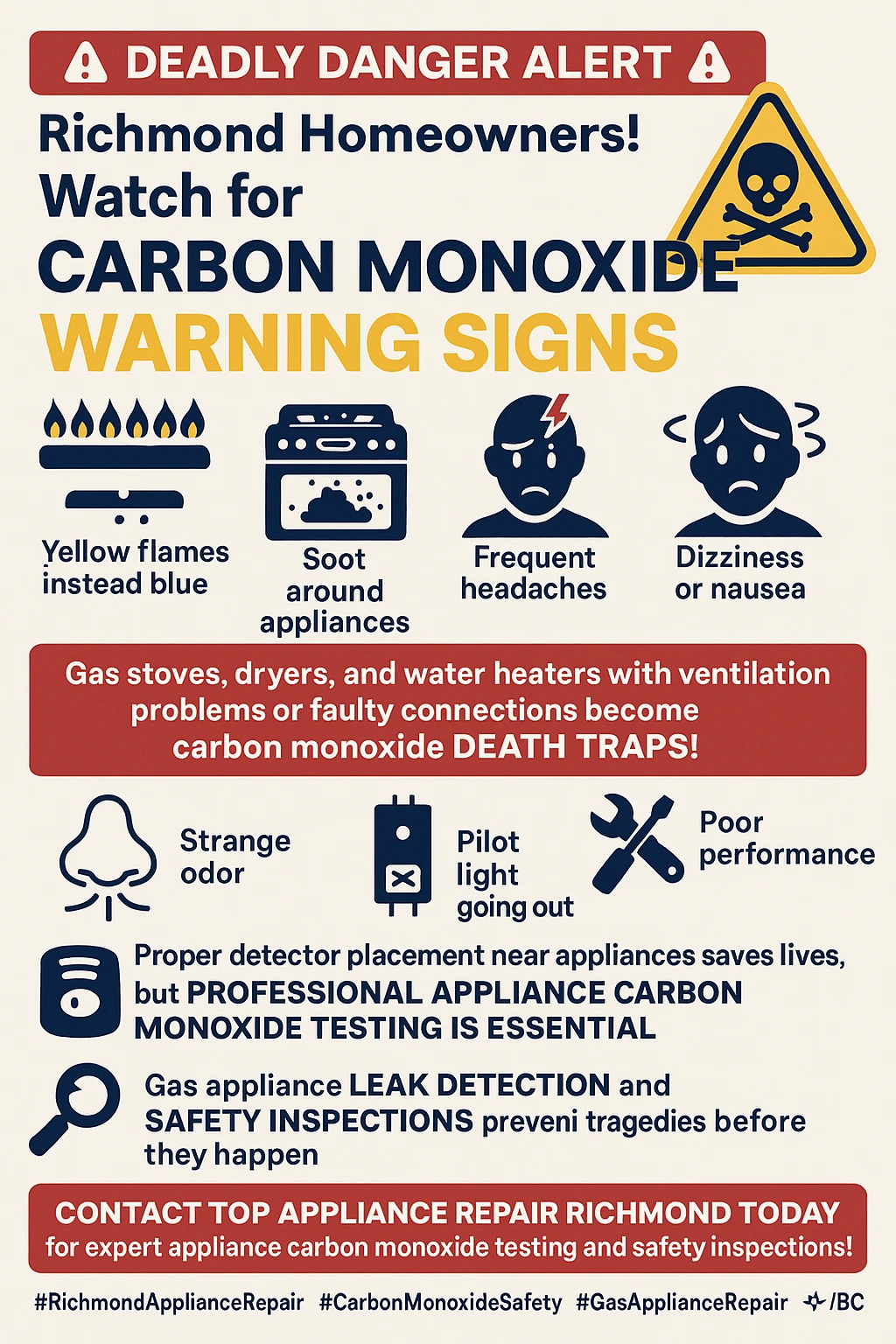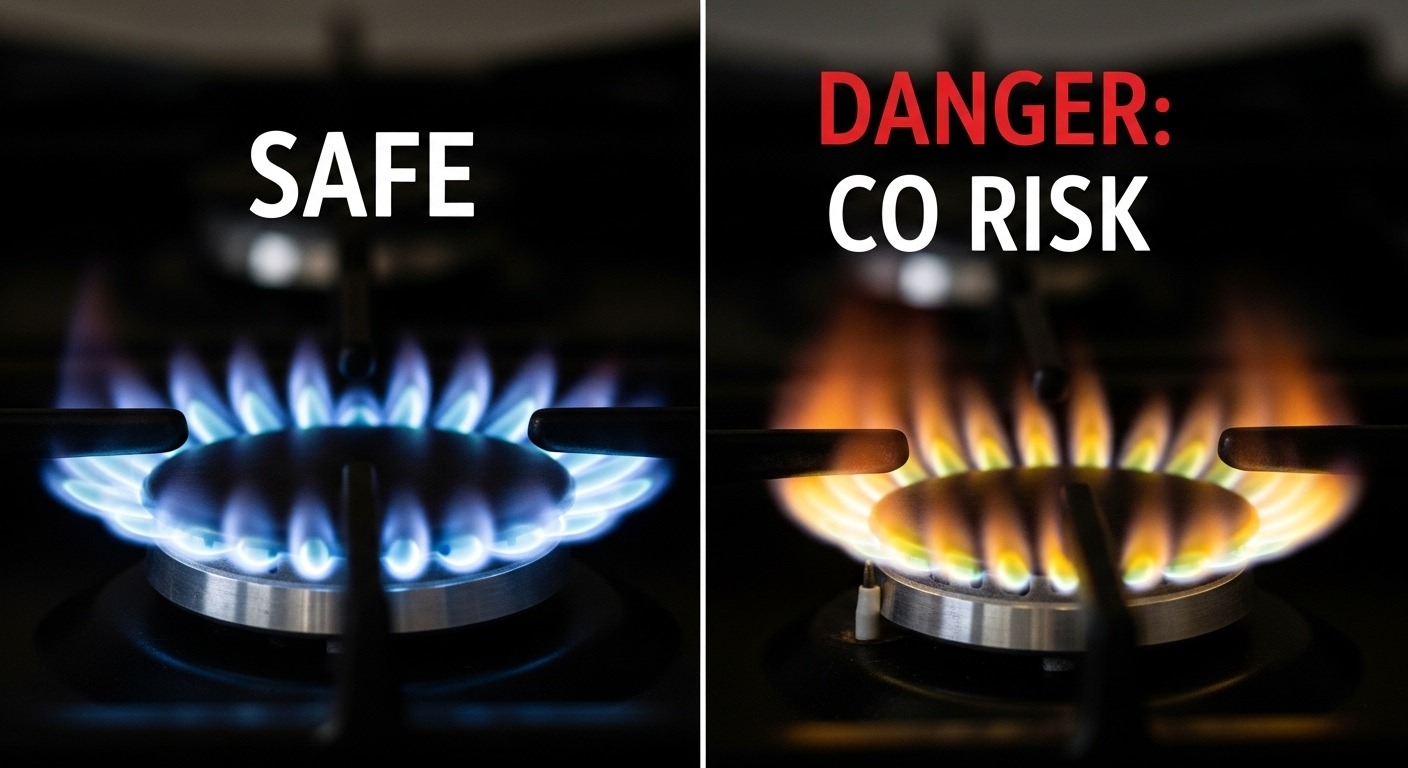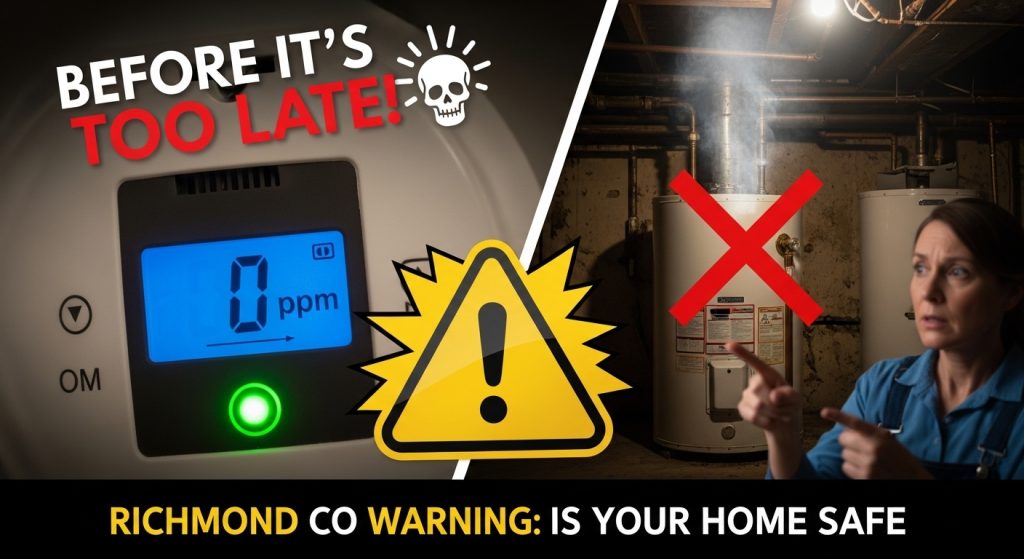Richmond Appliance Carbon Monoxide Risks: How Gas Appliance Malfunctions Turn Deadly (Critical Warning Signs Every Homeowner Must Know)
Worried your gas appliances might be silently poisoning your family with carbon monoxide? You’re right to be concerned – in Richmond homes, malfunctioning gas appliances kill more people annually than house fires, and the warning signs are easier to miss than you think.
Picture this: you wake up with a pounding headache, feeling nauseous and dizzy. Your kids are complaining about feeling sick too, and even the dog seems lethargic. You might think it’s the flu making its rounds, but what if I told you it could be something far more sinister lurking in your Richmond home? Carbon monoxide – that sneaky, invisible killer that’s produced by every single gas appliance in your house when things go wrong.
As someone who’s been in the home improvement game for years, I’ve seen too many close calls that could have been prevented with the right knowledge. The thing is, carbon monoxide doesn’t announce itself with a dramatic entrance. It’s colorless, odorless, and tasteless – basically the ultimate stealth assassin of home safety. But here’s the kicker: your gas water heater, furnace, stove, and even that cozy gas fireplace can all become carbon monoxide factories when they malfunction.
The statistics are honestly terrifying. According to the CDC, more than 400 Americans die from unintentional carbon monoxide poisoning every single year, with over 100,000 people rushing to emergency rooms and about 14,000 ending up hospitalized. And those numbers? They’re just the reported cases – imagine how many mild poisoning incidents go undiagnosed because people think they just have a bad case of the flu.
Key Outtakes:
- Gas appliances produce carbon monoxide as a normal byproduct, but proper venting prevents accumulation – when venting fails, deadly levels can build up in minutes
- Yellow or orange flames instead of blue flames on gas appliances indicate dangerous incomplete combustion and excess CO production requiring immediate professional attention
- Carbon monoxide poisoning symptoms mirror flu symptoms but affect all household members simultaneously and improve when leaving the house
- Richmond homes with backdrafting issues can literally suck carbon monoxide back into living spaces, creating extremely dangerous conditions that require specialized testing
- Low-level carbon monoxide detectors that alarm at 25 ppm provide earlier warning than standard detectors that don’t sound until 70 ppm levels

Understanding How Gas Appliances Become Carbon Monoxide Producers

Let’s get real about what’s actually happening inside your gas appliances. Every time you fire up that water heater, crank the furnace, or light a burner on your stove, you’re starting a controlled combustion process. When everything’s working perfectly, natural gas burns completely with oxygen, producing mostly carbon dioxide and water vapor – totally harmless stuff that gets vented safely outside.
But here’s where things get scary: when there’s not enough oxygen for complete combustion, or when something interferes with the burning process, your appliances start producing carbon monoxide instead. It’s like the difference between a clean campfire and a smoky, smoldering mess – except this “mess” can literally kill you in your sleep. The carbon monoxide molecule is basically oxygen’s evil twin, and your red blood cells can’t tell the difference.
What makes this particularly dangerous is that your body actually prefers carbon monoxide over oxygen – hemoglobin binds to CO about 200 times more readily than it does to oxygen. So even at relatively low concentrations, carbon monoxide starts crowding out the oxygen in your bloodstream. Your organs begin starving for oxygen while your body thinks everything’s fine. It’s like being slowly suffocated from the inside out.
The scary part is how normal this process can seem from the outside. Your furnace might be humming along, appearing to work perfectly, while secretly pumping out deadly levels of carbon monoxide because the heat exchanger has developed a crack you can’t see. Your water heater might be heating water just fine while backdrafting combustion gases into your basement instead of venting them outside. That’s why carbon monoxide has earned its reputation as the “silent killer” – it strikes without warning.
In Richmond specifically, we see unique challenges because many homes mix newer high-efficiency appliances with older venting systems, creating perfect conditions for backdrafting and carbon monoxide accumulation. When a high-efficiency furnace gets installed but the old atmospheric vent system isn’t properly sealed, you can end up with dangerous pressure imbalances that literally suck combustion gases back into your living space.
Critical Warning Signs Every Richmond Homeowner Must Recognize
Now that we understand the “why” behind carbon monoxide production, let’s talk about the warning signs that should have you calling a professional immediately. And I mean immediately – not “I’ll get around to it next week” immediately. These signs are your early warning system, and ignoring them is like ignoring a smoke alarm because the fire isn’t big enough yet.
The most obvious red flag is flame color on your gas appliances. I cannot stress this enough: blue flames good, yellow or orange flames very, very bad. Think of blue flames as your appliance’s way of saying “all systems normal,” while yellow or orange flames are basically screaming “HELP, I’M NOT GETTING ENOUGH OXYGEN AND I’M MAKING POISON!” If you see anything other than a crisp, steady blue flame on your stove, water heater pilot light, or furnace, you need to shut that appliance off and call a professional immediately.

Another major warning sign is the smell of gas where there shouldn’t be any. Natural gas companies add that distinctive “rotten egg” smell (mercaptan) specifically so you can detect leaks. If you’re smelling gas around appliances when they’re not supposed to be releasing any, that’s a clear indication of malfunction. Don’t try to light anything, don’t flip electrical switches, and definitely don’t think “oh, it’s probably nothing.” Get everyone out and call your gas company.
Visual clues around your appliances can be just as telling as flames and smells. Soot accumulation around gas appliances is like finding fingerprints at a crime scene – it’s proof that incomplete combustion has been happening. Look for black residue around furnace cabinets, water heater flues, or fireplace openings. Excessive condensation on windows near gas appliances can also indicate venting problems, as can rust or corrosion on flue pipes.
Pay attention to strange sounds too. Your gas appliances shouldn’t sound like they’re having mechanical seizures. Banging, gurgling, whistling, or unusual humming noises often indicate internal problems that can lead to carbon monoxide production. These sounds usually mean something isn’t operating as designed, and when gas appliances aren’t operating as designed, dangerous things can happen.
Here’s something most homeowners never think about: unusually high gas bills can actually be a safety warning sign. If your gas usage has spiked without explanation, it might mean gas is leaking somewhere in your system or that appliances are malfunctioning and burning fuel inefficiently. Both scenarios can lead to dangerous carbon monoxide situations.
The Hidden Danger of Backdrafting in Modern Richmond Homes
Let me tell you about one of the most dangerous carbon monoxide scenarios that most Richmond homeowners have never heard of: backdrafting. This is when the normal flow of exhaust gases from your appliances reverses direction, pulling combustion products back into your living space instead of venting them safely outside. It’s like having a vacuum cleaner suck poison gas directly into your home.

Backdrafting happens more often than you might think, especially in homes that have been weatherized or updated with energy-efficient features. Here’s the thing: when you make your home super tight and energy-efficient (which is great for your utility bills), you can accidentally create conditions where exhaust fans, dryers, and ventilation systems create negative pressure inside your house. This negative pressure acts like a giant straw, literally sucking air from wherever it can find it – including down through your gas appliance vents.
I’ve seen this happen when homeowners install powerful bathroom exhaust fans or range hoods without considering how they interact with gas appliances. You turn on that fancy new range hood while your water heater is running, and suddenly you
